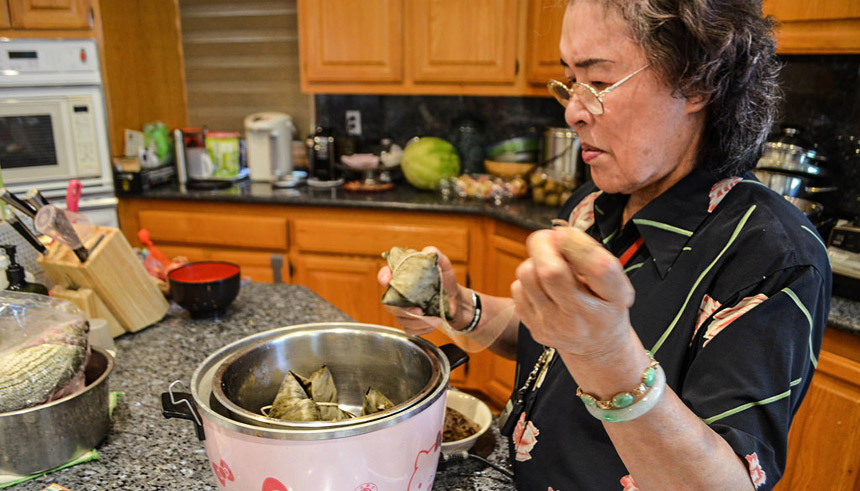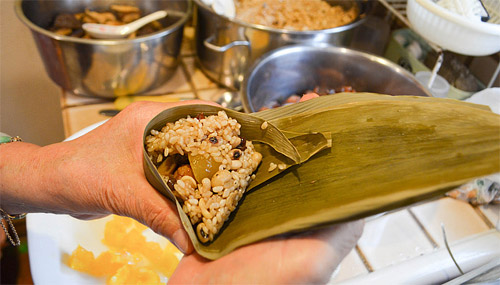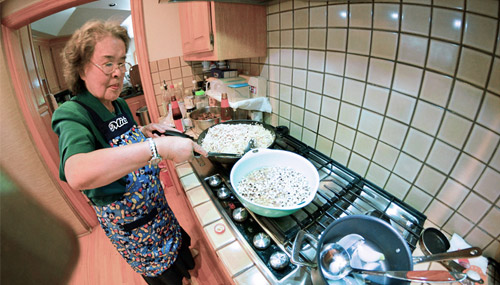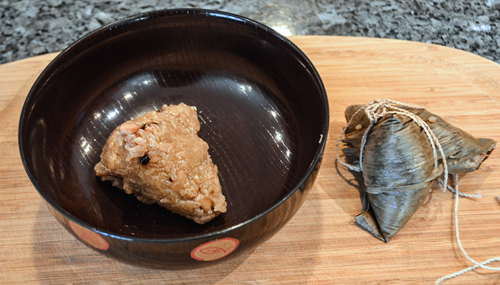East West Lifestyle
Saving the Recipes of China, One Province at a Time
By Clarissa Wei

In December, I'll be backpacking to all the provinces in China. My goal is to collect recipes from all 34 divisions in the span of two years.
This will include 23 provinces, four municipalities, five autonomous regions and two Special Administrative Regions.
I'm embarking on this trip because I believe the recipes of China are invaluable assets that are at risk of being forgotten with the rapid modernization of the country. According to research by Tianjin University, in 2000, China had 3.7 million villages. By 2010, only 2.6 million villages remained, which is a loss of 300 villages a day. By 2050, 70% of the population will be living in cities.
There's an ancient Chinese idiom that I have carried around for years as a reminder of how important food is to the Chinese: 民以食為天 mín yǐ shí wéi tiān.
The meaning: food is the priority of the populace.
The importance of eating is evident in everyday colloquialism. Greetings are prefaced by "Have you eaten yet?" and inviting people in to eat and drink is a must when it comes to basic hospitality.
Now, Chinese food isn't monolithic. It extends far beyond noodle- and rice-based dishes. There are four main schools of Chinese cooking and each province has a unique food culture and dishes that don't exist anywhere else. The North is heavy with dough and black vinegar, while the Southeast is known for its seafood. Southwest China has some of the spiciest fare in the world and western Chinese cuisine is filled with cumin-laced noodles, lamb and the occasional yak.
I've been shuffling back and forth between the United States and the greater China region since I was born. I have always been exposed to Chinese food and my family hails from a small city in the south of Taiwan called Tainan, lovingly referred to as the "City of Snacks."
I may be American, but my heritage is Chinese. This is my journey to tap into my guanxi (connections) and bridge the East and the West.

"I may be American, but my heritage is Chinese. This is my journey to tap into my guanxi (connections) and bridge the East and the West."
As the world struggles to understand China in the wake of her rise, food is an effective diplomatic tool. It's a basic human need, it's universal, it's pleasurable and it literally brings people together to the table.
Though it may be easier to document restaurants or to just merely describe dishes instead of figuring out how to make them, I've discovered that when you learn a recipe, you learn about the person behind it.
The journey, of course, starts at home. My first recipe is from my own grandmother and it's for zongzi, a Chinese rice dumpling wrapped in a tetrahedral shape by bamboo leaves, and tightened by a clever maneuver of string. Inside is a mixture of sticky rice with pork, peas, shiitake mushrooms, dried shrimp and a chunk of a cooked, salted duck egg. Of course, its contents can vary. Peanuts are usually the legume of choice, but my grandmother prefers black-eyed peas. Depending on her mood, sometimes she'll stick in a chunk of dried scallop.

For my grandmother, the zongzi is a symbol of love and, simultaneously, an act of saving money.
Growing up, I'd see her squatting on the kitchen floor, covering it with newspaper, string and bamboo leaves. It was a regular sight of my childhood. She prided herself on her ability to make zongzi because of how economical the dumpling is.
"I first started making zongzi when one of your uncles asked me why we didn't eat it during the Dragon Boat Festival," she told me. "So I went to the market and one of the ladies there taught me. I found out it was cheaper to make myself."

The rice dumpling is most commonly eaten during the Dragon Boat Festival, which rolls around once a year, usually in June. The festivities commemorate the life and death of the ancient poet Qu Yuan, who was a government official in the state of Chu. He was exiled for his reforms and eventually committed suicide by throwing himself into a river. In response, the people of Chu rushed out in their fishing boats, beating drums and throwing zongzi in the river to keep the fish and evil spirits from his body. Since then, dragon boat racing and the rice dumpling have been inseparable.
There are some regional variations to this dish. In the south of China and in Taiwan, tetrahedral is the preferred shape. In the north, the dumpling is wrapped into a cylinder. Even within Taiwan, there are regional distinctions. In the north of Taiwan, the bamboo leaf wrapper is much drier than in the south. Fillings differ by availability but really, at the end of the day, it's all about personal preference.
The preparation time is intensive, but once everything is done with, it becomes the ultimate fast-food item. My grandmother will often make hundreds of zongzi in one sitting – enough food to last her and her friends for weeks.
How it works: pop it in a steamer, unwrap it from its leaf and serve with oyster sauce.

Here's the recipe:
Zongzi
Servings: 20
Ingredients:
- 5 cups short-grain sticky rice
- 40 pieces of dried bamboo leaves
- 1 pound pork belly, cut into equal pieces
- 1 18-ounce bottle of oyster sauce
- 7 salted duck eggs
- 1/2 cup dried shrimp
- 1/4 cup vegetable oil
- 5 shallots, julienned
- 1 tablespoon dashi powder or MSG
- 1 tablespoon of salt
- 2 cups black-eyed peas
- 2 cups of dehydrated shiitake mushroom
- 1 roll of string
The day before, prep work:
- Wash and rinse the rice. Soak in water overnight and drain the next day.
- Wash and soak the bamboo leaves. On the next day, pat the leaves dry with a paper towel.
- Wash and rinse the black-eyed peas. Soak in water overnight and drain the next day.
- Soak the shiitake mushrooms in water and cut into bite-sized pieces the next day.
Directions:
- Cut the pork belly into even pieces. Blanch in boiling water for three to four minutes. Drain and put in a bowl. Add in half the bottle of oyster sauce (about 9 ounces), the dried shrimp and mix well.
- Take a large wok and add in 1/8 tablespoon vegetable oil over medium heat. Once it gets hot, add in the shallots and the bowl of pork belly with sauce and shrimp. Cook for about five minutes. Set aside in a bowl.
- Take another wok and add in 1/8 tablespoon vegetable oil. Add in the rice and the rest of the oyster sauce (about 9 ounces), cook for bit and then add in the dashi powder, salt and the black-eyed peas. Cook for 15 minutes and then turn off the heat.
- Separate the yolk of the salted duck egg. Cut the yolk into fourths.
- At this point, lay out the following ingredients: bamboo leaves, pork mixture, rice with peas, duck egg, shiitake mushrooms.
- To wrap the zongzi, use two leaves at a time. Wrap them into a cone shape and then put a spoonful of rice and peas in the bottom. Add in a couple chunks of pork, mushroom and duck egg and then cover it with more rice.
- Cup the bottom with one hand, then fold the top down slightly to the left, pinch the right side with the thumb and index finger and fold that over to the left. Tighten with string.
- Cook the zongzi in boiling water for 40 minutes. These can be refrigerated and resteamed. Serve with oyster sauce.
Hungry for more? Follow Clarissa’s journey through China as she uncovers authentic dishes and cultural insight.
Sign up for the Reach Further Newsletter
We’ll keep you in the know about the latest US-Asia business news and trends.
Suscríbase al boletín Reach Further
Lo mantendremos informado sobre las últimas noticias y tendencias comerciales entre Estados Unidos y China.

